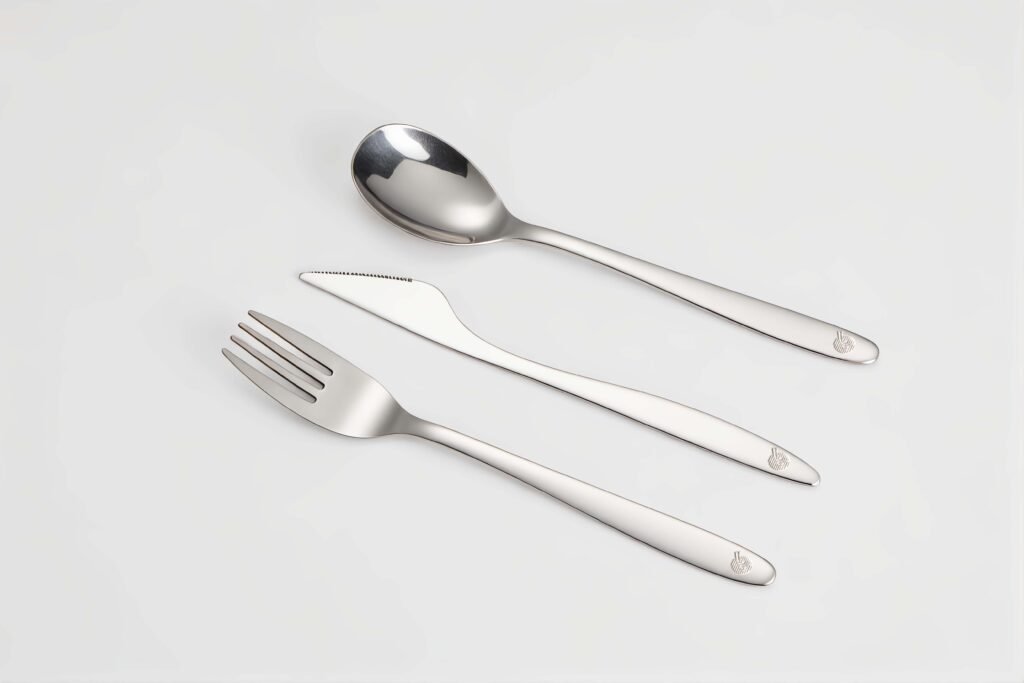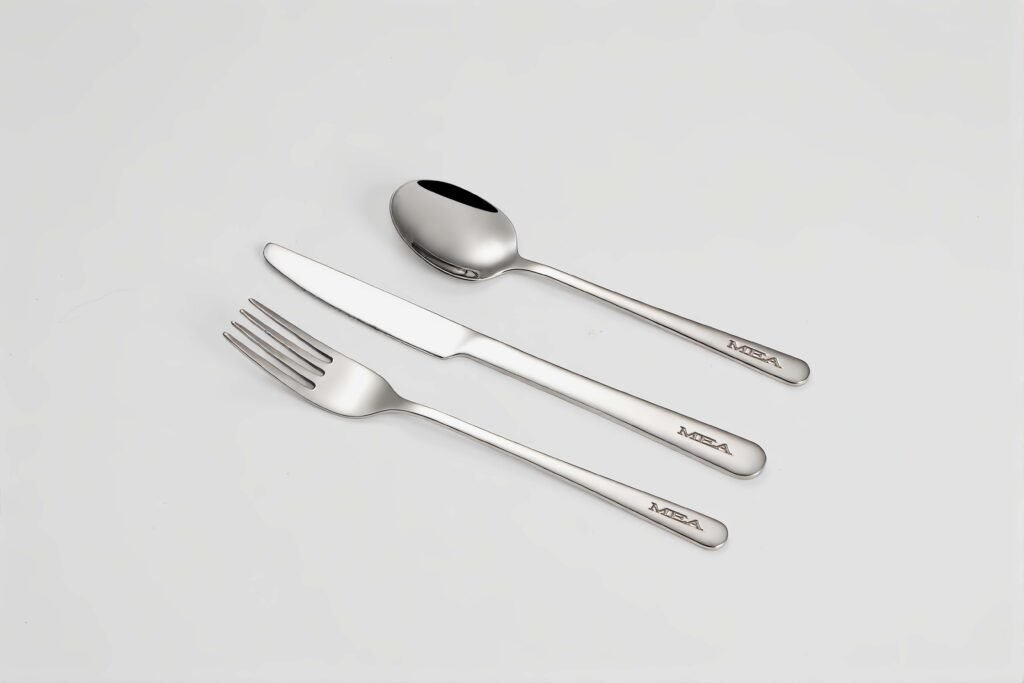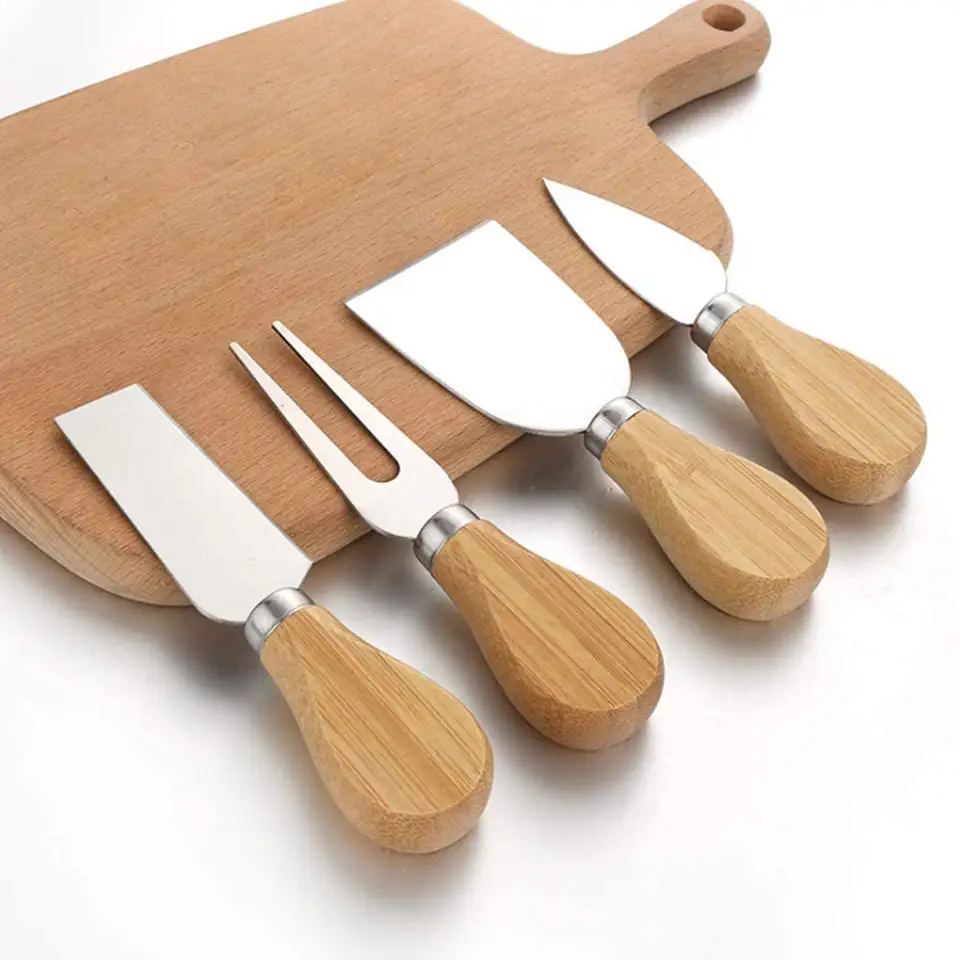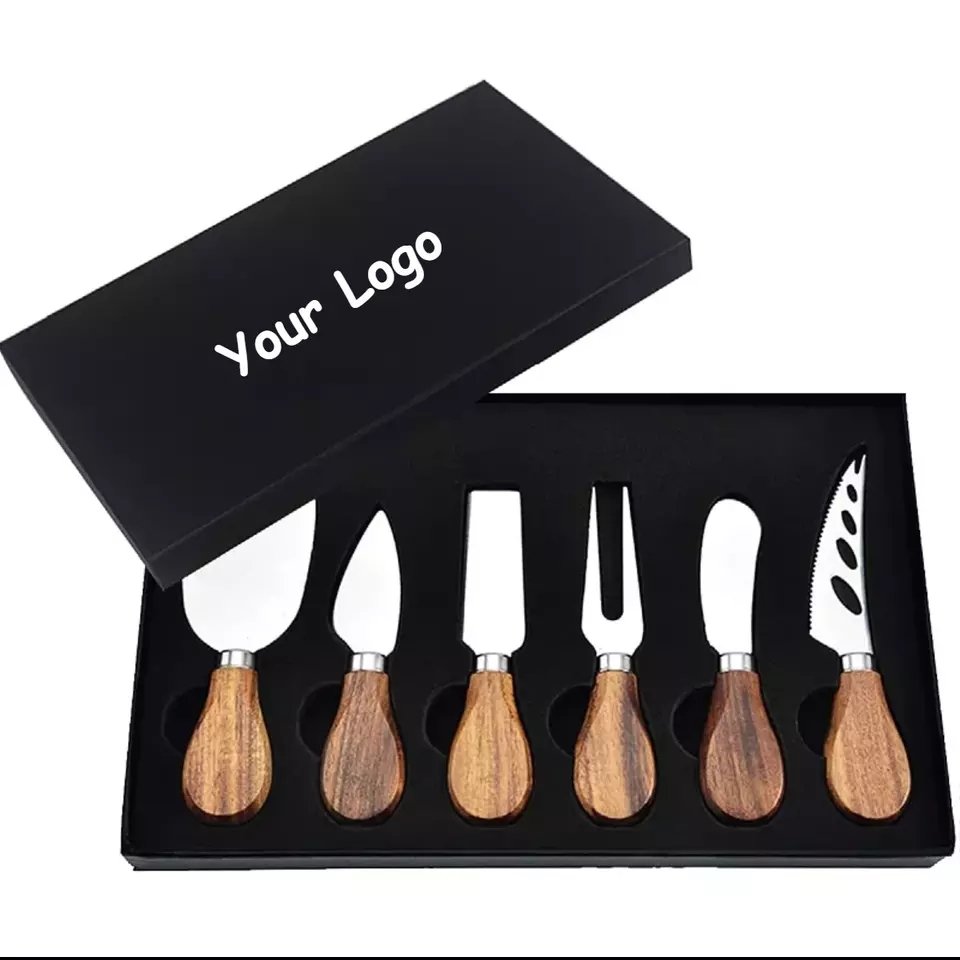Passengers notice immediately when airline silverware feels flimsy or uncomfortable. Poor-quality cutlery could affect their impression of the airline service.
Airline silverware is specially designed to meet aviation standards, balancing lightweight materials, strict safety regulations, and brand-specific aesthetics to ensure passenger satisfaction and efficient airline operations.
Understanding these specialized requirements helps airlines and suppliers deliver superior service. Let’s dive deeper.
Table of Contents
What Makes Airline Silverware Different from Standard Cutlery?
Frequent travelers immediately sense when cutlery feels awkward or unsuitable. Regular silverware doesn’t work smoothly in confined spaces like aircraft cabins.
Airline silverware differs by being lightweight, compact, ergonomically adapted to tight cabin spaces, and complying with strict aviation safety standards.
Ergonomic and Practical Considerations
Airline silverware designs prioritize practical and ergonomic features to enhance the passenger experience within tight cabin spaces:
Essential Features Comparison:
| Feature | Airline Silverware | Regular Silverware |
|---|---|---|
| Size | Compact | Standard |
| Weight | Lightweight | Heavier |
| Safety | Blunt edges | Sharp or defined edges |
| Space Optimization | Stackable design | Non-stackable |
| Cleaning & Hygiene | Easy cleaning, durable | Standard durability |
For instance, blunt-edged forks and spoons reduce potential safety hazards onboard. Stackable cutlery maximizes limited storage space in aircraft galley carts, critical in cramped airline environments. Regular silverware lacks these specifically tailored adaptations, making airline silverware uniquely suited to aviation.

How Do Airlines Balance Cost and Quality in Their Cutlery Choices?
Cutting corners on cutlery could harm customer satisfaction, but overspending isn’t viable either. Airlines continually face this tough choice.
Airlines balance cost and quality by choosing durable yet affordable materials, optimizing designs for repeated use, and investing strategically in branding details for premium passengers.
Cost-Quality Balancing Act
Airlines typically segment cutlery based on class:
Class-Based Cutlery Strategy:
| Travel Class | Material | Reuse Frequency |
|---|---|---|
| Economy | Plastic or Lightweight Metal | Single/Multiple |
| Business/Premium | Higher-grade Stainless Steel | Multiple |
| First Class | Premium Metals or Customized | Multiple |
By differentiating cutlery materials and design intricacies according to cabin classes, airlines efficiently manage costs while maintaining passenger perception of quality. They select suppliers like us, who understand how to deliver quality, durability, and cost-effectiveness without sacrificing passenger satisfaction.
What Materials Are Commonly Used for Airline Silverware and Why?
Selecting the wrong material can result in weight issues, cost overruns, or poor passenger experiences. Material choice deeply influences cutlery effectiveness.
Airline silverware commonly uses lightweight stainless steel, plastic polymers, or hybrid materials. These ensure safety compliance, weight efficiency, and practicality for onboard use.
Material Choices and Benefits
Airlines choose materials primarily based on:
Material Selection Criteria:
| Material | Weight | Durability | Cost | Environmental Impact |
|---|---|---|---|---|
| Lightweight Steel | Medium | High | Medium-High | Medium-Low |
| Plastic Polymers | Low | Medium | Low | High |
| Hybrid Composites | Very Low | Medium-High | Medium-High | Medium |
While stainless steel provides a premium feel and durability ideal for repeated use, plastic or hybrid options significantly reduce weight—critical for airlines looking to lower fuel costs. Many airlines blend these materials strategically to balance luxury perception with practical budget constraints.

How Important Is Weight in Airline Cutlery Design?
Every gram counts on an aircraft. Heavier cutlery leads to increased fuel consumption, directly impacting airline profitability.
Weight is critical in airline cutlery design as lighter cutlery significantly reduces fuel costs, enhances aircraft efficiency, and contributes to more sustainable operations.
Financial and Environmental Impacts
Airlines continuously seek lighter onboard materials:
Weight Impact Analysis:
| Cutlery Weight Reduction (per passenger) | Annual Fuel Savings (per aircraft) | Carbon Emissions Reduced |
|---|---|---|
| 5 grams | Approx. $50,000 USD | ~150 Tons CO2 annually |
Even minor weight reductions have considerable financial and environmental impacts when scaled across entire fleets. Smart design choices in cutlery significantly contribute to airlines’ operational efficiency and sustainability goals.

What Role Does Branding Play in Airline Silverware Design?
Inconsistent branding could dilute an airline’s image, affecting passenger loyalty and perception.
Branding in airline silverware is crucial for reinforcing airline identity, ensuring consistency in passenger experiences, and enhancing customer loyalty.
Branding and Passenger Experience
Customized airline silverware often features airline-specific logos and distinctive designs:
Branding Elements:
| Element | Purpose | Example Airline |
|---|---|---|
| Logo Engraving | Brand reinforcement | Qatar Airways |
| Custom Shapes | Unique passenger experience | British Airways |
| Color Scheme | Visual alignment with airline’s identity | Alaska Airlines |
Airlines use branded silverware as subtle marketing tools, leveraging the passenger’s tactile and visual experiences to solidify brand loyalty and recognition.
What Are the Compliance and Safety Standards for Airline Silverware?
Airlines face strict regulatory standards. Non-compliance can lead to severe penalties and safety hazards.
Airline silverware must meet international safety and health standards, including IATA regulations, FDA approvals, and other country-specific aviation safety criteria.
Key Standards Overview
Critical Compliance Standards:
| Standard | Description |
|---|---|
| IATA Regulations | Aviation safety and cabin item rules |
| FDA Approval | Food-contact safety, hygienic standards |
| ISO Certifications | Quality and production process control |
Ensuring compliance involves rigorous testing and certification procedures, something experienced manufacturers like us handle with precision and care.
How Do Airline Catering Companies Choose the Right Cutlery Supplier?
Choosing the wrong supplier risks delays, compliance issues, and customer dissatisfaction.
Airline catering companies select suppliers based on reliability, proven experience with international airlines, timely deliveries, strict adherence to quality standards, and competitive pricing.
Supplier Selection Criteria
| Priority | Description |
|---|---|
| Proven Track Record | Experience with leading airlines |
| Quality Assurance | Adherence to international compliance standards |
| Flexibility | Capability to manage custom orders promptly |
| Cost-effectiveness | Balance affordability with quality |
Our extensive experience with airlines like British Airways, Qatar Airways, and China Airlines demonstrates our capability and reliability in delivering high-quality airline silverware.
Airline silverware uniquely combines ergonomics, safety, branding, and efficiency—far surpassing regular cutlery’s demands—to deliver optimal passenger experiences.





